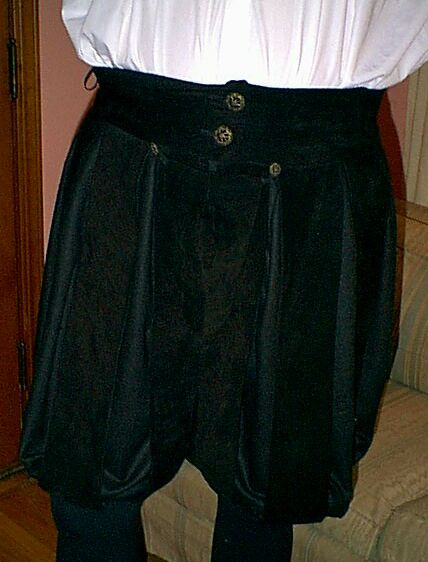Trunk hosen, slops or "pumpkin pants" are a "must" for any man wishing to do a later period persona. The challenge lies in making the trunk hosen serviceable as well as attractive.
This section will attempt to describe how to make a basic pair. I have taken period example, added a few ideas of my own in the creation of this pattern. I have tried to be as delicate and modest as possible in my descriptions. The section is written for the stitcher with some experience.
The fabric requirements will greatly depend on the size of the person that the trunk hosen are being made. Hopefully, calculations can be made from making the pattern.
I make my trunk hosen in two layers. Usually the top layer will contrast with the lining layer. Trim and pearl can be added on the strips depending on taste.
Although I give permission for people to use these patterns and instructions for personal use, I do claim copyright on all the patterns and instructions.

Front view
I apologize for the black on black photos. This was the only pair I had on hand when putting this section together
